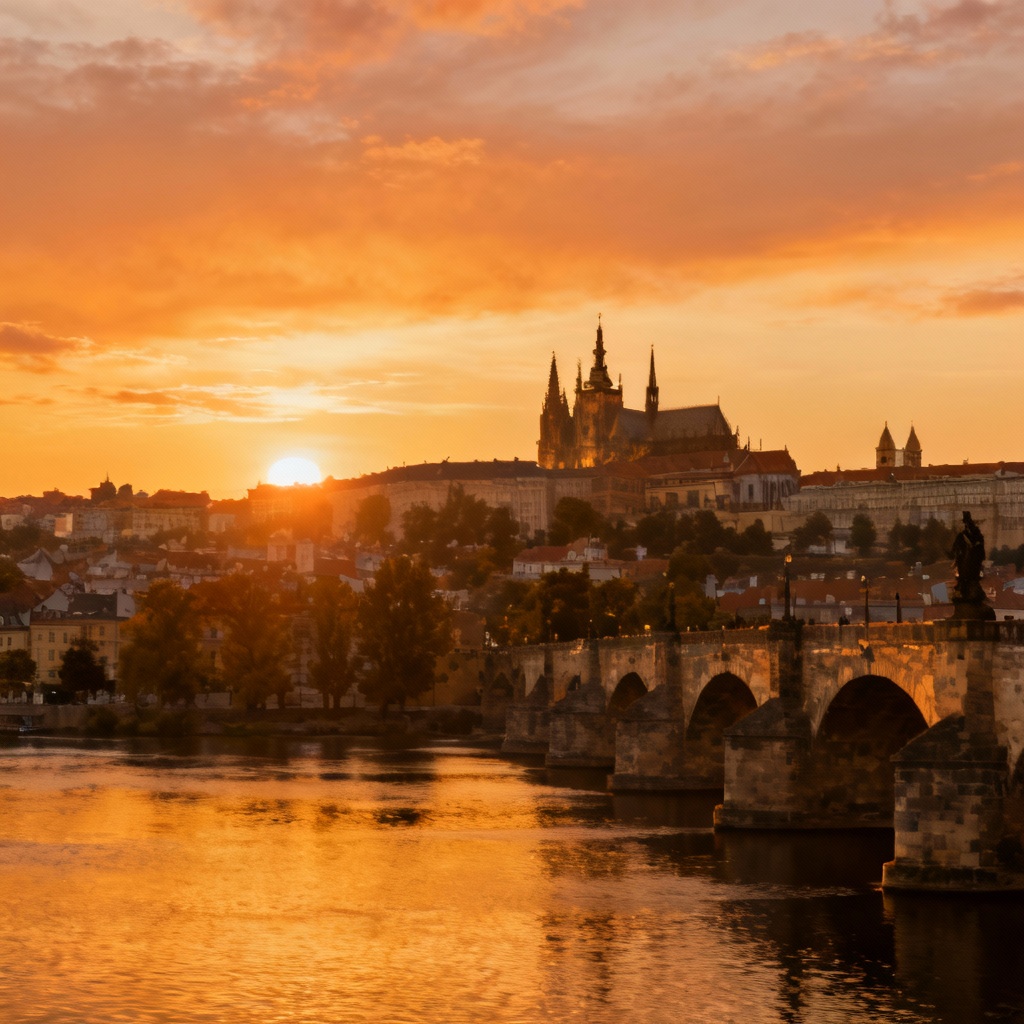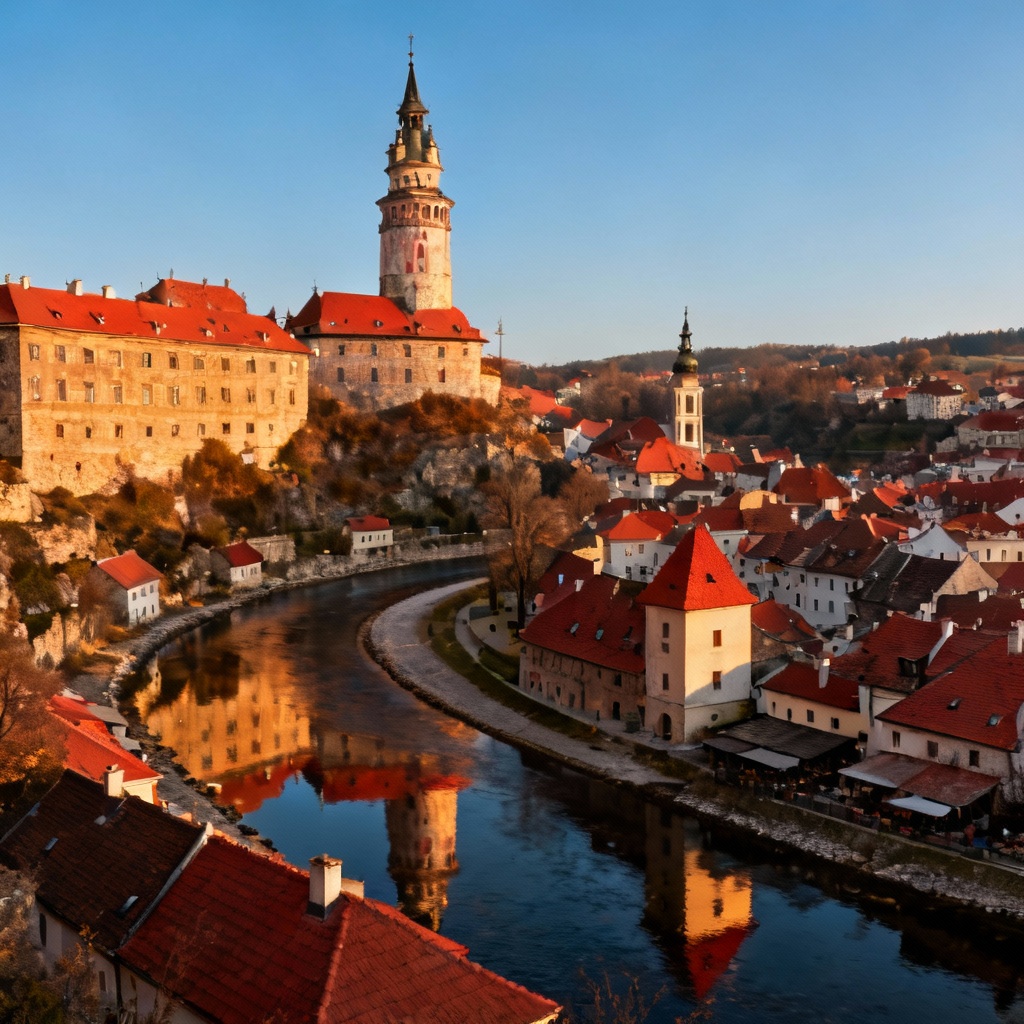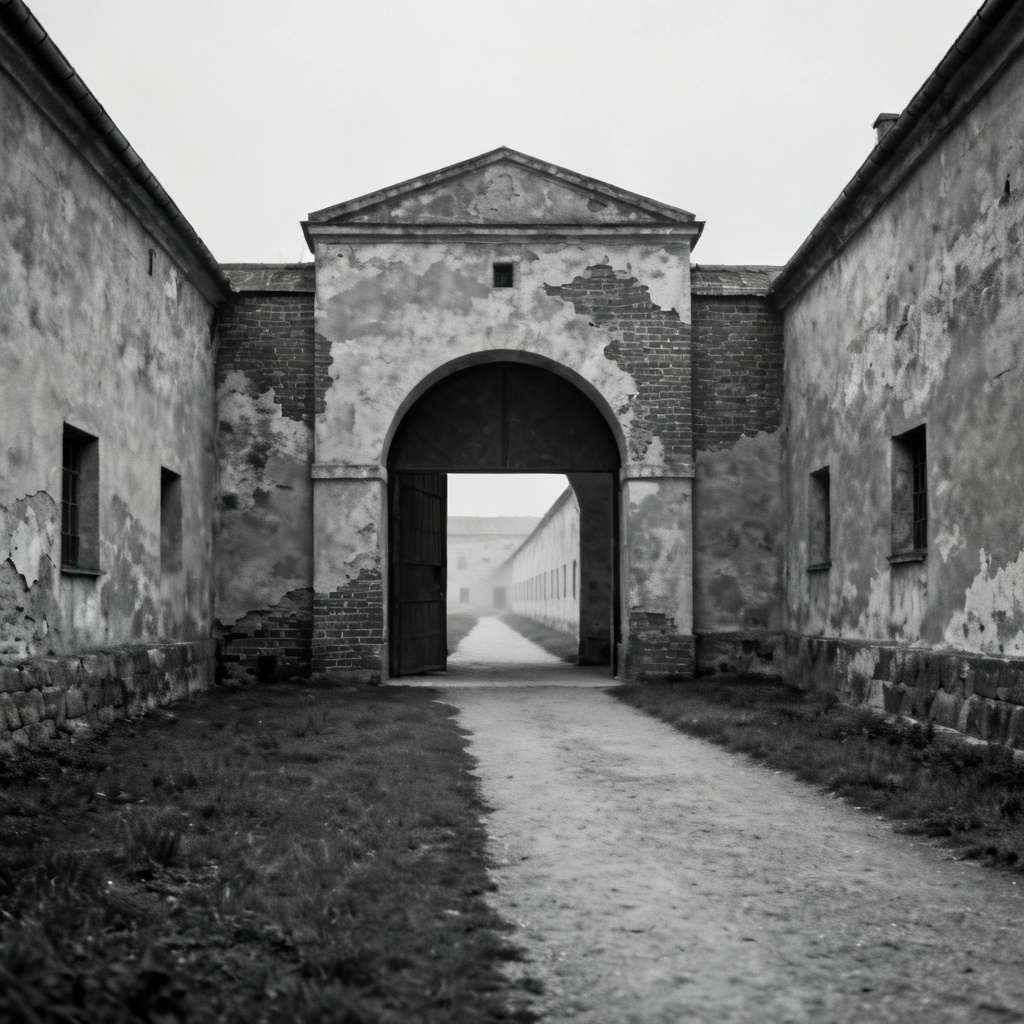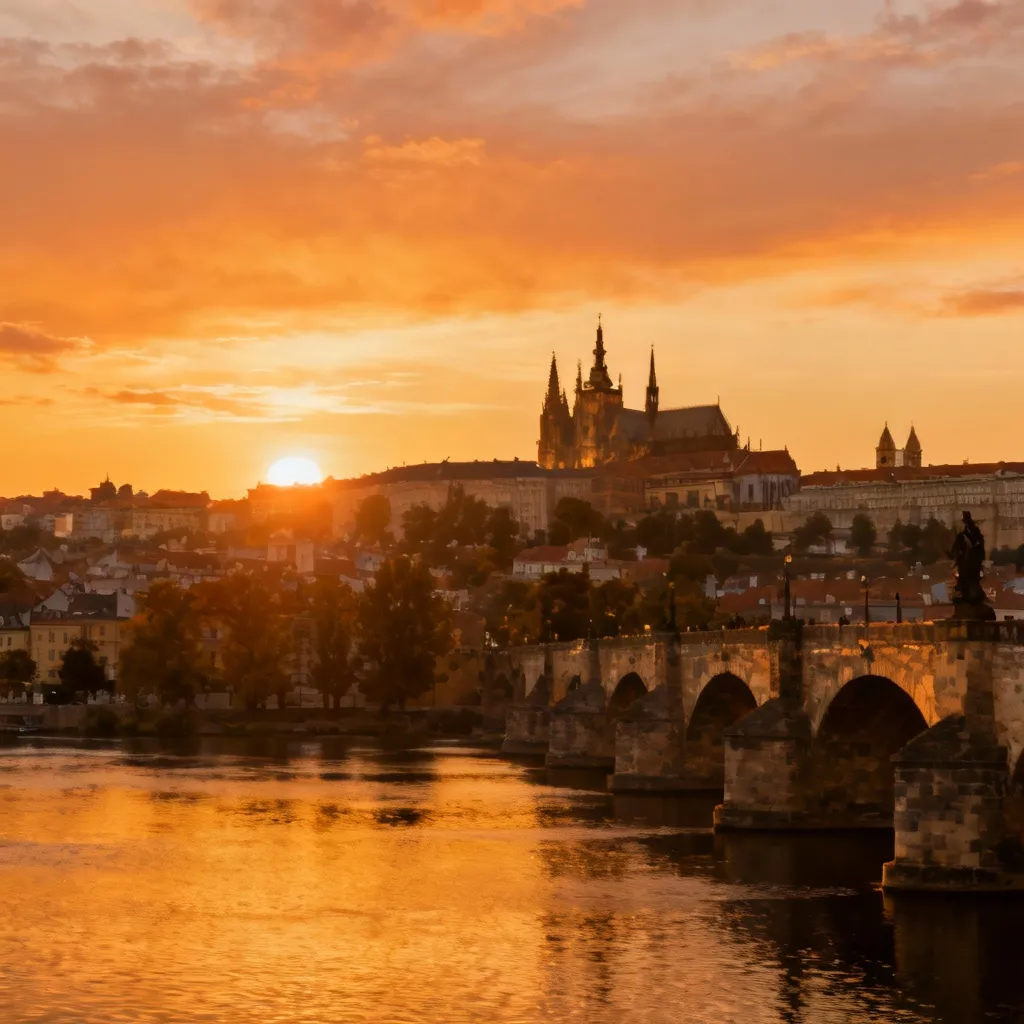From Medieval Fortresses to UNESCO Gems: 10 Must-Visit Historical Landmarks in the Czech Republic
The Czech Republic historical landmarks weave together a millennia of captivating and complex narratives, making Czechia one of Europe's premier cultural destinations. This Central European nation’s history is vividly told through its magnificent architecture, an aesthetic journey encompassing everything from stark Romanesque fortresses to soaring Gothic cathedrals and elaborate Baroque palaces. The density of high-value historical sites to visit is remarkable.
The landscape is speckled with centuries of history, from the Vltava River banks in Prague to the peaceful fields of Moravia. This travel guide explores ten of the most iconic historical sites, ranging from the unmissable capital attractions to some of the finest UNESCO sites Czech Republic has to offer, providing actionable tips for your next great journey.
I. Prague's Imperial Heart: Capital City Landmarks
The capital city, Prague, often referred to as "the city of a hundred spires," is home to four monuments that encapsulate Bohemian statehood, religion, and urban life over more than a thousand years.
1. Prague Castle (Pražský hrad): Largest Ancient Castle Complex and Seat of Bohemian Kings
Dominating the city skyline, Prague Castle is not merely a single fortress but an immense complex of palaces, churches, and gardens, established around 880 AD. As the traditional seat of Bohemian kings, Holy Roman Emperors, and, since 1918, the residence of the Czech President, it serves as the ultimate symbol of Czech statehood.
Its varied architecture showcases a blend of Romanesque, Gothic (notably St. Vitus Cathedral), Renaissance, and Baroque styles that reflects its thousand-year history. A critical artifact kept within is a set of the Bohemian Crown Jewels, hidden deep inside a special room.
Actionable Tip: Purchase your ticket for the specific 'Circuit' that grants access to the buildings you most want to see, and use Tram No. 22 to ascend to the top and walk downhill to Lesser Town.

2. Charles Bridge (Karlův most): A 14th-Century Icon with 30 Baroque Statues
Stretching gracefully across the Vltava River, Charles Bridge began construction in 1357 under King Charles IV to replace the former Romanesque Judith Bridge. The bridge itself is a marvel of Gothic civil engineering, resting on sixteen monumental arches.
It is most recognized for the dramatic gallery of thirty Baroque statues of saints that adorn the balustrade, added later in the late 17th and early 18th centuries. The most famous statue is that of St. John of Nepomuk, who, according to legend, was martyred by being thrown into the river from this very bridge in the 14th century.
Actionable Tip: The bridge is pedestrian-only and extremely crowded during the day; visit at sunrise or late at night for an unforgettable, crowd-free experience.
3. Old Town Square & Astronomical Clock (Staroměstská radnice): Gothic Marvel and the 'Walk of the Apostles'
The Old Town Square, a center of pivotal moments in Czech history, is anchored by the Old Town Hall and its extraordinary Astronomical Clock, or Orloj. This masterpiece, first installed in 1410, is the world’s oldest astronomical clock still operating.
On the hour, a mechanism performs the captivating “Walk of the Apostles,” where the twelve figures of the Apostles emerge from small windows above the clock dial. Figures symbolizing Vanity, Greed, Lust, and Death (the Skeleton striking the hour) also activate.
Actionable Tip: Crowds gather well before the hourly show (9 AM–9 PM or 11 PM); arrive 10-15 minutes prior and find a spot slightly off to the side, rather than directly in front, for a better viewing angle.
4. Old Jewish Cemetery & Quarter (Josefov): A Moving Testament to Jewish History in Bohemia
Tucked within the narrow lanes of Prague's Jewish Quarter (Josefov) lies one of Europe's most poignant sights: the Old Jewish Cemetery. As the sole burial ground for Prague Jews from 1439 to 1787, limited space meant bodies were layered atop one another, reaching up to twelve layers deep.
This extreme stacking resulted in the densely crowded, raised cemetery landscape seen today, with an estimated 100,000 individuals buried under some 12,000 visible Gothic, Renaissance, and Baroque headstones. Notable figures interred here include Rabbi Judah Loew Ben Bezalel, the legendary creator of the Golem.
Actionable Tip: Entry to the cemetery is part of the Jewish Museum’s paid circuit; plan your visit outside of Jewish holidays and Saturdays (Sabbath) when all Jewish Museum sites are closed.
II. Bohemian Fortresses and Fairytale Towns
Venturing beyond Prague reveals a core part of the nation's heritage in the countless medieval castles Czech nobility established. These sites blend formidable military strength with opulent, artistic residence.
5. Karlštejn Castle: Gothic Fortress built by Charles IV to safeguard Crown Jewels
Built starting in 1348 by Holy Roman Emperor and Bohemian King Charles IV, Karlštejn stands as a peerless example of high-Gothic architecture. Its original purpose was not just as a royal residence but as a fortress designed to securely house the Imperial Regalia and the Imperial Crown Jewels.
The structure ascends in dramatic terraces, culminating in the massive Great Tower. Inside this tower lies the Chapel of the Holy Cross, a spectacular masterpiece adorned with semi-precious stones and an internationally unique collection of 129 Gothic panel paintings by Master Theodoric.
Actionable Tip: Karlštejn is one of the easiest castles to visit outside of Prague; a frequent and scenic train ride from the capital deposits you in the nearby town.
6. Český Krumlov Castle and Town: UNESCO World Heritage gem in Southern Bohemia
Nestled within a dramatic horseshoe bend of the Vltava River in South Bohemia, the historical town center of Český Krumlov is recognized as a quintessential UNESCO sites Czech Republic World Heritage gem. The town and its colossal castle complex—the second largest in Czechia after Prague Castle—have remained virtually untouched for over five centuries, preserving a remarkable medieval layout.
The castle blends Gothic origins with magnificent Renaissance and Baroque modifications, prominently featuring the striking Baroque Theatre, which retains its original stage machinery, props, and costumes from the 18th century. Wandering the pedestrian-only center offers cobblestone charm, while the castle grounds offer spectacular views.
Actionable Tip: Since many visitors come on day trips from Prague, book a room to stay the night. The town, free of the mid-day tourist rush, becomes truly magical in the early morning and late evening.

7. Hluboká Castle: Neo-Gothic architectural masterpiece in the South Bohemian countryside
The sheer white silhouette of Hluboká Castle, with its 11 towers and picturesque battlements, presents the very definition of a fairytale medieval castles Czech travellers seek, though its current form is entirely modern. Reconstructed between 1840 and 1871 for the powerful Schwarzenberg noble family, the castle embodies the Romantic Neo-Gothic architectural style.
The Neo-Gothic style, widely known as Gothic Revival, was explicitly inspired by England's famous Windsor Castle. Visitors can explore the luxurious interior apartments with intricate wood carvings and extensive art collections that testify to the Schwarzenberg family's vast wealth.
Actionable Tip: Don’t skip the exterior and park: the immense English-style castle park, garden, and grounds surrounding Hluboká are free to wander and offer stunning views of the elaborate architecture.
III. Beyond Prague: Commemoration and Cultural Landscapes
Moving outside the core of Bohemia, other historical sites speak to both the country’s industrial power and its most somber periods, while vast cultural landscapes showcase the ingenuity of the country's former noble families.
8. Kutná Hora (The Silver City): St. Barbara's Church and the chilling Sedlec Ossuary ('Bone Church')
Once one of Europe's great medieval silver mining centers, Kutná Hora rivaled Prague in wealth during the 14th century, a prosperity evidenced in its historical town center, which is a UNESCO sites Czech Republic heritage property. The most striking symbol of this wealth is the Church of St. Barbara, a sprawling jewel of Late Gothic design comparable to a great European cathedral.
Less grand but infinitely more macabre is the Sedlec Ossuary, famously known as the Bone Church, located just outside the main town center. Its astonishing decorations, including a chandelier and the Schwarzenberg coat of arms, are artistically arranged using the bones of an estimated 40,000 to 70,000 human skeletons.
Actionable Tip: The Sedlec Ossuary is near the main train station, while St. Barbara's Church is in the main town, about 30 minutes away on foot; buying a combined ticket to all three key religious buildings (including the Cathedral of Our Lady at Sedlec) is generally the most economical choice.
9. Terezín Memorial (Former Ghetto and Concentration Camp): A somber historical site dedicated to remembrance
The town of Terezín, originally an 18th-century Habsburg military fortress, carries the painful designation of being the Theresienstadt Ghetto and transit camp used by the Nazis during WWII. While not an extermination camp, it saw the death of over 33,000 people and served as a propaganda tool and a critical waypoint before deportation to death camps like Auschwitz.
Today, the Terezín Memorial encompasses the Small Fortress (Gestapo prison) and the main town, housing the Ghetto Museum with exhibits that display harrowing artifacts, including the resilient art and poetry created by imprisoned children. It stands as the sole institution of its kind in the country and a crucial place of remembrance.
Actionable Tip: While possible to visit via public bus from Prague, many travelers recommend joining a guided tour to gain deeper, properly contextualized historical understanding of the complex.

10. Lednice-Valtice Cultural Landscape: Expansive UNESCO complex blending Baroque architecture and nature (Moravia)
In South Moravia, near the Austrian border, lies the expansive, man-made Lednice-Valtice Cultural Landscape, inscribed on the UNESCO list in 1996. Spreading over nearly 300 square kilometers, this is one of the largest landscape complexes in Europe.
Developed primarily by the Dukes of Liechtenstein between the 17th and 20th centuries, it seamlessly connects two major chateaux—the Neo-Gothic Lednice and the Baroque Valtice—via a seven-kilometer, lime tree-lined avenue. The park contains many romantic follies, including temples, hunting lodges, and even a unique Minaret, all crafted in the English landscape style.
Actionable Tip: Given the scale of the park, visitors should consider renting a bicycle from Břeclav, Lednice, or Valtice to explore the cycling paths and remote follies within the cultural landscape efficiently.
Conclusion: Planning Your Historic Czech Journey
From the monumental, thousand-year-old presence of Prague Castle to the deeply moving narratives preserved at the Terezín Memorial and the refined aristocratic leisure embodied by the Lednice-Valtice Cultural Landscape, the Czech Republic historical landmarks offer an astonishing depth of culture and experience. Every castle and town listed—from the medieval purity of Karlštejn Castle to the baroque fantasy of Český Krumlov and the silver city legacy of Kutná Hora—tells an essential story. Plan your trip today to walk the streets of history in one of Europe’s most beautifully preserved nations.
